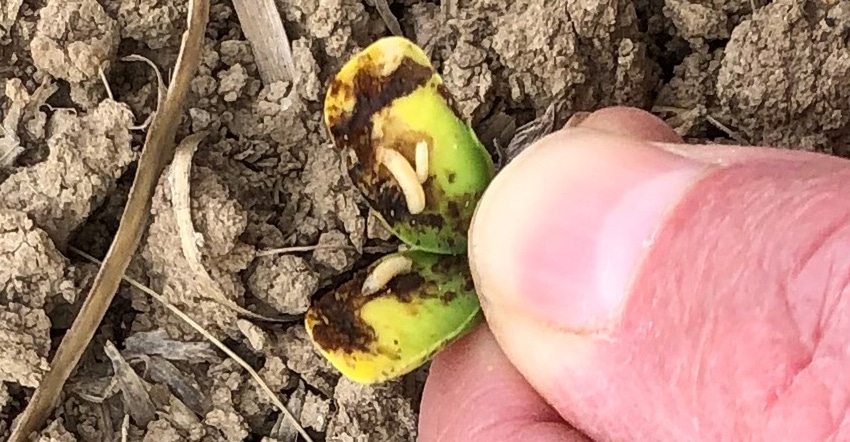June 1, 2022

Soybean emergence has been delayed and variable across Michigan, and this has producers replanting entire fields or large areas of fields.
In some cases, the replanted beans are being planted at rates nearly as high as the original planting date. Even when seed for replanting is provided at little or no cost, producers should still make replant decisions carefully as there are additional costs involved (labor, fuel, and equipment wear and tear), and the risk of reducing the stand of the original planting.
The first step is to identify the cause of the delayed emergence. The main factors affecting emergence this spring were the cold conditions that prevailed for the previous two weeks and the lack of rain and ensuing dry soil.
The cold soil delayed emergence, making the young seedlings more susceptible to damage from soil insects. Seed corn maggot is a likely culprit in fields that were planted within two weeks after incorporating green weeds, a cover crop or manure with tillage. In fact, seed corn maggot is a major problem this spring in fields that followed seed corn in southern Michigan.
Many seed corn fields were planted to cover crops last fall, and because of the excellent growing conditions, these produced lush growth. The cover crops were terminated and incorporated into the soil this spring before planting, which decayed and attracted seed corn maggot adults.
Many fields were also planted before the peak emergence and egg-laying of the seed corn maggot adults. All these factors combined to create a severe seed corn maggot outbreak that has overcome insecticide seed treatments in southern Michigan.
The lack of rain and dry soil conditions can delay emergence in two ways. The first is that the soil may be dry and crusted above the seedling, and the seedlings have reduced pushing power when moisture is limiting.
If this is the problem, using a rotary hoe to break the crust will be the best choice if the plants are healthy but struggling to emerge. Also, a timely rain would significantly improve emergence in these fields. The plants that are just cracking the soil will emerge in a day or two even without rotary hoeing or additional rain.
However, the seed that was placed in the open seed furrow is unlikely to produce viable plants as the seed initiated the germination process but died.
Michael Staton is a MSU Extension soybean educator.
Source: MSU Extension, which is solely responsible for the information provided and is wholly owned by the source. Informa Business Media and all its subsidiaries are not responsible for any of the content contained in this information asset.
You May Also Like




